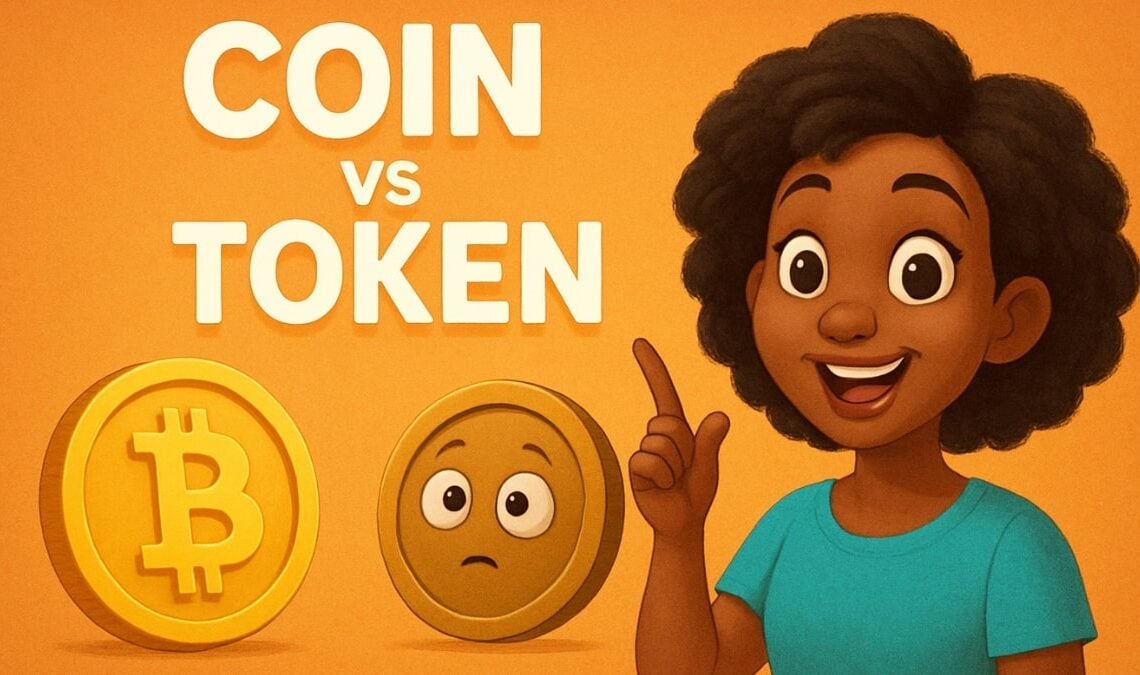In the world of crypto, understanding the difference between coin vs token is essential for anyone looking to navigate the space with clarity and confidence. Although the two terms are often used interchangeably, they refer to fundamentally different types of digital assets.
Whether you’re investing, trading, or building, knowing what sets them apart helps you evaluate projects, grasp utility, and avoid common pitfalls. This guide breaks down their roles, use cases, and what they mean for your crypto journey in 2025.
What Is a Crypto Coin?
A coin is a digital currency that operates on its own native blockchain. These assets serve primarily as a medium of exchange, store of value, or unit of account—just like traditional currencies, but in a decentralized digital format.
Some of the most well-known crypto coins include:
- Bitcoin (BTC): Runs on the Bitcoin blockchain and is primarily used for peer-to-peer value transfer.
- Ethereum (ETH): The native currency of the Ethereum blockchain, used to pay for transaction fees and smart contract execution.
- Litecoin (LTC): A Bitcoin fork with faster block times, used for quick transactions.
In short, if the asset is used to power or secure a blockchain network and has its own chain, it’s a coin.
What Is a Crypto Token?
A token is a digital asset that is built on top of an existing blockchain. Instead of having its own chain, it relies on another blockchain’s infrastructure to function. The Ethereum network, for example, hosts thousands of tokens that follow the ERC-20 or ERC-721 standards.
Tokens are typically used for:
- Utility: Accessing a product or service within an ecosystem (e.g., BAT for Brave browser rewards).
- Governance: Voting on DAO proposals or protocol updates.
- Asset Representation: Representing stablecoins, NFTs, or real-world assets.
Unlike coins, tokens do not maintain the security of the blockchain they operate on—they simply exist within it.
Key Differences: Coin vs Token
Here’s a breakdown of the most important differences between coins and tokens:
| Feature | Coin | Token |
| Blockchain | Has its own (e.g., Bitcoin, Ethereum) | Runs on an existing blockchain (e.g., ERC-20) |
| Primary Use | Currency or store of value | Utility, governance, or specific project function |
| Infrastructure Role | Maintains network security and consensus | Depends on host blockchain |
| Examples | BTC, ETH, SOL | USDT (ERC-20), UNI, APE, MATIC (on ETH) |
| Development Complexity | Requires full blockchain infrastructure | Can be launched with smart contract |
Can a Token Become a Coin?
Yes. In fact, many well-known coins started as tokens. Projects often launch tokens during early development on Ethereum or another host chain and later migrate to their own mainnet, effectively turning the token into a coin.
A famous example is Binance Coin (BNB), which began as an ERC-20 token and later transitioned to its native BNB Chain.
Why This Distinction Matters
Understanding the coin vs token distinction helps in several ways:
- Investing: Coins often represent more mature, infrastructure-level plays, while tokens can be early-stage or project-specific bets.
- Security: Tokens are more susceptible to smart contract risks.
- Functionality: Knowing what role an asset plays in its ecosystem helps you evaluate its potential utility and longevity.
Final Thoughts: Coin vs Token in 2025
As blockchain ecosystems become more complex, recognizing the difference between coins and tokens is more important than ever. Coins build and secure the roads of Web3, while tokens are the vehicles, tools, and tickets used to interact with the ecosystem.
Both have value—but for very different reasons.
Before you invest, ask yourself: is this asset powering a blockchain, or is it leveraging one?

















